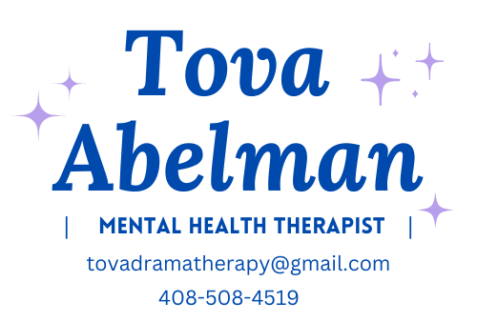
Many people struggle with emotional eating. What do I mean by ’emotional eating’? A sense of feeling out of control around food and eating in response to emotions (usually difficult ones like anger, sadness, anxiety, stress, boredom) or physical sensations (such as feeling tired, cravings, urges). It’s almost as if there are (at least) 2 parts of self: a part that is engaging in emotional eating while at the same time there is another part of self that wants to stop doing it! The fact that a person continues to engage in this behavior while also wanting to stop doing it indicates that on some level the part that emotionally eats wants to do it…because emotional eating is in some way perceived to be beneficial, at least in the short term
A common strategy to ‘get in control’ of one’s emotional eating is to go on a diet of some kind. While diet absolutely plays a role in emotional eating, binge eating, and food addiction, for many people diet alone is not a long term solution to emotional eating. Allow me to be clear: if a person struggles with emotional eating AND continues to eat hyper-processed, ultrapalatable foods high in added sugar and refined/processed carbohydrates, overcoming emotional eating is unlikely to be successful long term: they’ll keep falling into the trap. A full discussion of the physiology involved in eating behavior, cravings, and appetite is beyond the scope of this blog post. Some people intellectually know this and yet struggle to adhere to a life without regular cake, ice cream, pizza…and/or use food for other reasons than physiological hunger, with the ultimate result of being overweight (per BMI) and unable to lose weight. Also, I would argue most eating is emotional on some level, so emotional eating in and of itself is not necessarily problematic. Also beyond the scope of this blog post are other physiological states that can make weight loss difficult such as poor quality sleep, problematic light exposure, lack of physical activity, stress, and more. Some people can follow a healthy eating pattern relatively easily, tolerate cravings and urges to overeat with healthy responses, and live their life. This blog post is intended to offer an understanding of inner experiences of people who struggle to do that.
Just as there are many healthy eating patterns, there are many psychological strategies to help people control their eating and effectively respond to cravings and urges to eat. A ‘real world’ solution might incorporate different strategies: what works is what works for a given individual. A deeper question, and the one I am going to follow here, is which part of the self is enacting those new healthy responses to urges or cravings to overeat?
Let’s start at the behavioral level. Emotional eating is a behavior. It’s observable, because someone can see a person eating. But the behavior itself, emotional eating, in and of itself tells us nothing about its purpose/function for that person. Context matters.This means, two people might do that same behavior—emotional eating—but for each person the behavior has a different function. It might serve as a way to avoid something (like emotions or situations). It could be a kind of rebellion. It could be a way to numb out or self soothe. To further complicate this, the same person can emotionally eat, in different contexts and situations and in response to different triggers! Same person, same behavior…different functions and underlying motivations.
Now I want to dive into a process that can help untangle the process of emotional eating and start to consider the underlying motivations for each step of the process. This largely involves a conceptualization of inner parts of self. Thinking in terms of ‘multiplicity’ regarding the self is shared in various modalities including internal family systems; schema therapy (modes), and drama therapy (roles). Other modalities touch on states of mind that can be further externalized as different personas/roles/characters such as DBT (wise mind, emotion mind, reasonable mind) and ACT (self as context or the observing self). There are, no doubt, other conceptualizations that can be extended in this same way, creating characters out of different inner states to reflect different motivations, cognitions, and behaviors. A role or character can be conceptualized as a kind of container for mindsets/cognitions and behavioral patterns.
Applying this to emotional eating: examine each step of the emotional eating process and the corresponding behaviors. If this were a story or movie, consider each step carried out by different characters. There isn’t one ‘self’ emotionally eating; there are different characters/parts of self involved, each with different (and at times conflicting) motivations for the micro-behaviors that comprise what is experienced as ’emotional eating’. While certain modalities have specific names for different roles, it can also be useful to come with one’s own terminology.
As in any story, something happens. In the context of emotional eating, that’s often called a trigger. A trigger is anything that prompts the emotional eating process for an individual. It might be a situation, a person, a comment, a physical sensation, a feeling, a place. A nuanced point is that it really isn’t the trigger itself that is the ‘problem’: it’s the meaning the person gives it/the association they have to it/their thoughts about it and what it means to or about them. Consider what part of self was triggered— our first ‘character’. Perhaps this is a vulnerable part. Or an angry part. A part that fears being abandoned, not good enough, rejected. A part that is impulsive or feels it can ‘never get enough’ of what it wants or needs. A part that struggles to tolerate discomfort and/or is undisciplined. This character/part is struggling! There are many healthy ways to respond to this character. Emotional eating is the current method. But what part of self does that, and why?
Consider that another character steps in— a kind of ‘inner critic’. This critic might take on the voice of people from one’s life, the media, society, or religion. Inner critics can be harsh. Chances are, this inner critic does not make you feel good, soothed, accepted, or any positive emotion. To recap: something happened; a part of self was triggered and is in pain; the inner critic steps in and makes things worse. We need a character to step in and rescue that vulnerable part!
There is another part of self that steps in to help out that vulnerable part, and it is using emotional eating to do so. Maybe the function is to numb; avoid; distract; or soothe. It might feel hopeless, and emotional eating is a form of surrender. These are all questions for an individual to explore given their personal experience.
And what does a person usually do after they emotionally eat? Do they vow to start another diet? Do they cast out whatever food they deem to be ‘the problem’? Guess what, this is another part, another character— a controlling character. Think about it: When a person ‘decides’ to follow a strict program or eliminate a certain food, how does that make them feel? Probably more in control and empowered, at least in the short term. This controlling part is a kind of idealization of how they’d like to be— in control— because if they are in control things aren’t uncertain and they won’t be vulnerable or rejected. It can give the illusion of acceptance—by others, by other inner parts— and compensate for deeper, more challenging feelings of anxiety and uncertainty. This character is in stark contrast to the first vulnerable character we explored— the part that was triggered.
The dynamics, motivations, and objectives of these characters and how they interact can be complex and complicated— and they are all internal and specific to a given person. What’s missing here is a wise character, a part that can step in and offer compassion, tolerate the ambiguity of life, experience both joy and discomfort, and help the person choose a different way of responding to their emotional eating triggers. It can be helpful to explore what this character (as well as the other characters) looks like, how this character can be embodied, what they say, and what they do…especially towards that vulnerable part when it shows up. This can be unique process for each person.
What this process is essentially doing is conceptualizing the inner experience of emotional eating into a kind of inner drama, complete with different ‘characters’ and roles, each with their own motivations. Overtime, a person can begin to recognize when a different part is present, defuse/distance from this inner role/part of self, and shift into a more supportive role. In short, the person is becoming their own ‘director’ by noticing the presence/absence of different roles/characters/parts of self and switching to the wiser/compassionate/meaningful roles/parts rather than becoming fused with roles/parts that fuel emotional eating. This process is aligned with the ‘meta-role’ described by Adam Blattner (drama therapy) and self-as-context/perspective taking within ACT. The deeper philosophical/spiritual implications of ‘self’ are beyond the scope of this blog post. My goal is to apply the perspective of inner multiplicity insofar as it is helpful in addressing emotional eating.
There are many tools to explore these different characters ranging from the embodied experiential work of drama therapy and psychodrama to journaling and expressive arts. I think an important goal is to help the client identify how they can know when a given part or role is active, largely through embodiment: posture, gesture, tone of voice, physical sensations. And, how they can access the wiser/compassionate/kind/healthy part as needed. This may also be through embodiment but can also be a word, phrase, mantra (a bit of CBT in terms of the types of thoughts this part might have and/or what they would say and how they would act). Applying narrative structure can be beneficial for many reasons such as identifying ‘helper’ and ‘guide’ inner parts of self and/or contextual elements and giving clients a framework to find a sense of meaning and transcendence within their struggles.
These parts can also be explored using CardPlay. Imagery can be used to explore these parts of self. Cards can be used to explore relationships and dynamics (include inner relationships and dynamics) spatially, including in a kind of social atom (psychodrama). Using cards extends the mind and can introduce novel ideas, concepts, and ways of expressing complex and at times non-linear experiences.
